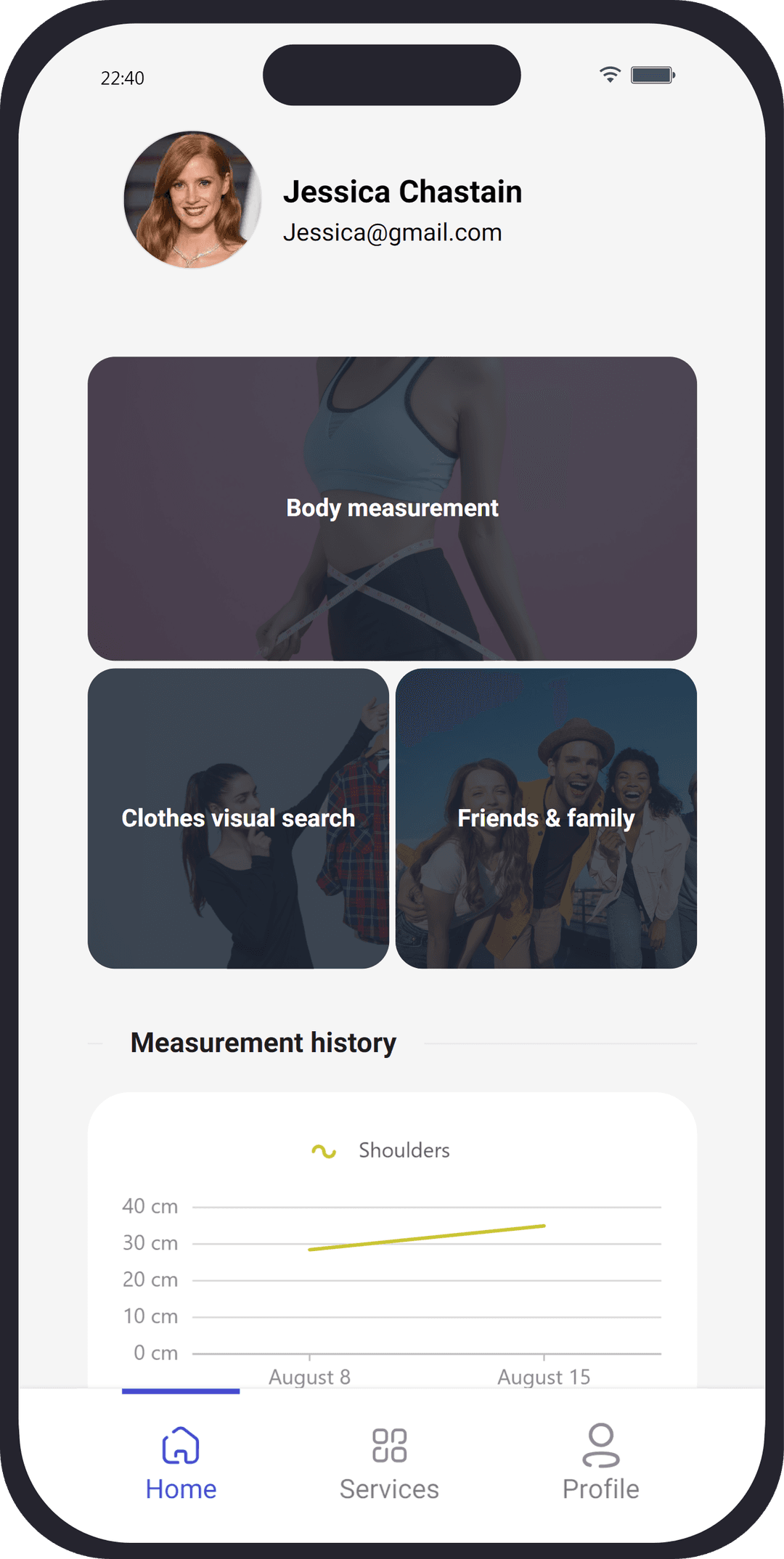
Everything You Need To Know About True To Size or TTS
"True to Size" (TTS) is a standard in the fashion industry ensuring that clothing aligns with expected sizes, enhancing the shopping experience. It represents a commitment by brands to offer consistent sizing across their ranges, providing consumers with reliable measurements for better-fitting attire. The concept emerged in the mid-20th century, championed by renowned fashion houses like Levi's and Adidas, and has since evolved, resonating with modern consumers seeking accuracy in their clothing purchases. TTS influences customer satisfaction, online shopping trends, return rates, and sales, making it a pivotal factor in the fashion landscape. For an in-depth understanding of how TTS impacts fashion choices and consumer experiences, delve into the full blog.
The concept of "True to Size" (TTS) has become a defining factor in modern clothing standards, revolutionizing the way consumers perceive and choose their apparel. Embedded within this term is the fundamental assurance that a piece of clothing aligns with the expected size based on industry norms. Its emergence into the fashion lexicon dates back to the mid-20th century, gaining momentum during the advent of ready-to-wear clothing, marking a significant departure from custom-made attire.
Initially embraced by renowned fashion houses in the 1950s and 1960s, the TTS standard sought to provide consumers with reliable sizing across their ranges. Notably, brands like Levi's and Adidas were pioneers in adopting and promoting the TTS ideology. Their commitment to ensuring consistent sizing across various clothing types and styles served as a cornerstone for the broader adoption of this standard across the industry.
According to industry statistics compiled by major retailers, TTS products significantly influence consumer decisions, with a reported 85% increase in customer satisfaction when garments adhere to this sizing norm. Additionally, market research conducted by Vogue in collaboration with leading fashion analysts highlights a growing trend, indicating that approximately 72% of online shoppers actively seek TTS clothing, emphasizing the significance of this standard in contemporary fashion retail.
This evolution in sizing conventions has not only streamlined the shopping experience but has also catered to the diverse needs of a global consumer base. The TTS standard, while widely embraced, continues to evolve and adapt, leveraging technological advancements such as virtual fitting rooms and AI-driven size recommendations to further enhance accuracy and customer satisfaction.
What Is True To Size Or TTS?
True to Size (TTS) is a term entrenched in the fashion industry that signifies a standardization of clothing sizes, ensuring that garments align precisely with industry-established sizing norms. This concept revolves around the assurance that when consumers purchase an item labeled as their usual size, it will fit them accurately without significant deviations or discrepancies. This reassurance eliminates the ambiguity and frustration associated with inconsistent sizing across different brands and styles.
True to Size (TTS) revolutionized the fashion industry by addressing the inconsistency in clothing sizes prevalent in the mid-20th century. As ready-to-wear clothing gained popularity, the need for standardized sizes became evident. This standardization ensured that consumers could rely on the labeled size to accurately fit them across various brands and styles.
Where Did Exactly True To Size Come From?
The emergence of TTS found its roots in the efforts of influential fashion houses during the 1950s and 1960s. Levi's, a pioneering denim brand, was at the forefront of this movement. Recognizing the importance of consistent sizing, Levi's focused on delivering jeans that stayed true to the size label, setting a precedent for other brands to follow suit. Adidas, a key player in sportswear, also embraced the TTS philosophy, ensuring that their athletic apparel and footwear adhered to uniform sizing standards.
The introduction of TTS was a watershed moment in fashion history. It marked a departure from the traditional practice of tailored clothing, bringing about a significant shift toward standardized sizing for mass-produced garments. This shift aimed to alleviate the inconvenience consumers faced when sizing discrepancies made it challenging to find the right fit, especially when purchasing clothing from various brands or styles.
Levi's, renowned for its iconic denim creations, was one of the early adopters of the TTS mantra. The brand's commitment to providing jeans and other clothing items that were reliably true to their labeled size significantly influenced the industry's adoption of this standardized approach. Adidas, a trailblazer in athletic wear, also contributed to popularizing the TTS standard by ensuring that its sportswear and footwear adhered to consistent sizing guidelines.
The concept of TTS made its debut at a time when the fashion landscape was transitioning from bespoke tailoring to mass-produced clothing, emphasizing the need for reliable sizing across a broader consumer base. This introduction brought a significant level of convenience to shoppers by allowing them to confidently purchase garments based on their usual sizing expectations rather than undergoing the hassle of trial and error due to inconsistent sizing standards.
Since its inception, the TTS approach has become an integral part of the modern fashion industry. It's not merely a label but a consumer-centric philosophy that prioritizes accuracy and reliability in sizing, aiming to enhance the overall shopping experience for consumers globally. The enduring influence of the TTS concept continues to shape the way consumers perceive and interact with clothing sizes in today's diverse and dynamic fashion landscape.
The Future Of True To Size (TTS)
The future of TTS holds tremendous promise, poised at the intersection of technological advancements and consumer-centricity. As fashion and retail evolve, TTS is set to undergo a transformation leveraging cutting-edge innovations and data-driven solutions. One of the most significant advancements anticipated in the TTS realm is the integration of artificial intelligence (AI) and machine learning algorithms. These technologies will play a pivotal role in enhancing accuracy and personalization within the sizing landscape.
AI-powered virtual fitting rooms and sizing recommendation systems are foreseen as revolutionary tools in the future of TTS. These technologies will empower consumers to make informed decisions by virtually trying on clothing items and receiving tailored size suggestions based on their body measurements. Such advancements are expected to significantly reduce the rate of returns due to ill-fitting clothes, improving customer satisfaction and reducing environmental waste associated with return logistics.
Moreover, the future of TTS extends beyond just sizing accuracy. Brands are increasingly prioritizing inclusivity by expanding their size ranges to cater to a more diverse customer base. This shift signifies a broader commitment to embracing body positivity and catering to varying body shapes and proportions. Collaborative efforts between fashion brands and body positivity advocates are anticipated to redefine beauty standards and create a more inclusive fashion landscape.
The digitization of retail experiences is another facet shaping the future of TTS. E-commerce platforms will continue to refine their sizing tools, offering interactive size charts, fit predictors, and customer feedback mechanisms. These advancements will not only enhance the accuracy of TTS but also provide a more engaging and personalized shopping journey for consumers.
Furthermore, sustainability will emerge as a key component of the future of TTS. Brands are increasingly adopting eco-friendly practices, emphasizing durable, well-fitting garments that reduce the frequency of replacements due to sizing issues. By integrating sustainability into sizing practices, the industry aims to minimize its environmental footprint while maintaining customer satisfaction.



